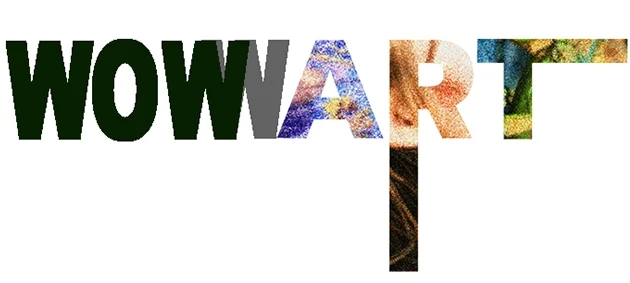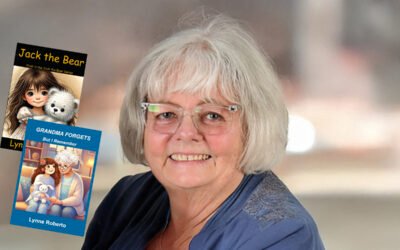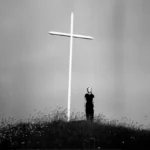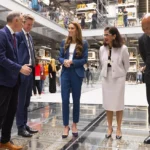Robert Holyhead Creates Poetic Visual Worlds Through Color, Space, And Gesture

Photo: Robert Holyhead’s art is a sublime interplay of emotion and precision, redefining visual language through mastery of color and space.
Exploring The Emotional Weight Of Negative Space
Robert Holyhead delves into his process, the interplay of color, space, and form, and how personal experiences and modern life inspire his intimate, thought-provoking compositions.
Robert Holyhead is a master of nuance, a painter whose work transforms subtle gestures into profoundly evocative experiences. His paintings possess a quiet power, a delicate yet commanding presence that draws viewers in and holds them suspended between worlds. His boundless curiosity and intellectual rigor channel his creative process, resulting in compositions that balance simplicity and complexity, restraint and intensity. Few artists are capable of such intimate exploration of space, color, and form, all while engaging with the sensory and emotional experiences of the viewer.
Holyhead’s masterful use of white space, semi-translucent color, and visible brushstrokes reveals an artist deeply engaged with the physical and emotional aspects of painting. His works are not just visual objects but immersive experiences that invite an ongoing dialogue between the artist, the viewer, and the world at large. Through his exploration of negative and positive spaces, Holyhead creates tension and poise, offering moments of introspection and connection while challenging our perceptions of balance and harmony.
As an artist represented in major collections, including the Tate, Centre Pompidou, and Arts Council Collection, Holyhead has achieved recognition for his singular vision. Yet his work continues to evolve, informed by residencies, travel, and the interplay between his meticulously crafted paintings and the fluidity of his delicate watercolors. Whether shaped by personal experiences, unfamiliar environments, or broader reflections on modern life, Holyhead’s art reminds us of the power of presence in an increasingly fragmented world. It is this rare and thoughtful approach that makes his art so arresting and essential.
In this revealing interview, Holyhead offers a deeper understanding of his creative process, from the fragile balance in his compositions to the emotional resonance of his brushstrokes. As you read his insights, you’ll find yourself transported into his painterly world—a space where precision and intuition are harmoniously intertwined, and where each stroke feels as alive and immediate as the artist’s hand that created it.
Can you describe your artistic process and how you develop the motifs that appear in your paintings?
Generally, this consists of two aspects of the work developed simultaneously and in relation to each other: I make groups of watercolour drawings on paper and paintings in oil. How these inform each other is an important part of this process; there are no direct correspondences between one drawing and one painting. In this sense, the watercolours follow a broader approach in order to allow experimentation of form and drawn/colour interaction.
“There are no direct correspondences between one drawing and one painting; they inform each other through experimentation and process.” –Robert Holyhead
Drawing stands for a larger range of experiences. The paintings are specifically contained in groups or sets. Unlike the implied ‘infinite’ production of form in the works on paper, the limits of the paintings are set in terms of form (motifs), scale, and colour, and are staked out as they progress, but consciously regulated.
What inspired you to focus on delicate small-size formats and the use of semi-translucent colours in your work?
Around 2005/2006 the paintings became lighter in touch and sparer in composition, partly in response to a change in my working environment – I moved into a bright, uncluttered studio and took the opportunity to de-familiarise myself with my vocabulary. While earlier canvases were entirely covered in bold, sometimes clashing colours and geometric forms, the paintings became more restrained compositionally and chromatically. I was attempting to both clear and withhold something: a strategy was to use expanses of white ground left uncovered, or leave traces of colour at the canvas-edge, where paint had been removed from the surface. Those new paintings invited close engagement due to their modest size, or rather their scale in relation to the human body. I consciously set them up as portrait-oriented spaces, limb-length, to establish a corporeal relationship with the viewer that brought with it a sense of familiarity. Yet the intimacy with them is unsettled by a certain structural or chromatic awkwardness that pervades the paintings, making them difficult to place.
“Shapes of white untouched space against colored touched space create poise, balance, and tension between surface and object.”–Robert Holyhead
How do you balance the negative and positive spaces in your compositions, and what effect do you aim to achieve through this balance?
Each painting takes one predominant colour balanced against area(s) of white ground, this method – shapes of white untouched space (negative) against the coloured touched (positive) space create a ‘poise and balance’ and tension between the painted surface and painting as object. The configuration of both gestural and geometric form against white ground reinforces the taut, yet essentially fragile balance of composition which encodes and decodes the encounter. I’m taking a moment in which I was exceptionally present and then replaying it using a method that forces me to be exceptionally present again.
You mention that your work reflects both personal language and familiarity with the world. Can you elaborate on how you integrate personal experiences into your art?
A significant part of my working practice is going somewhere I don’t know well (residencies) and making large groups of watercolours. Whenever I take a trip somewhere – and nowadays this is by motorcycle, an activity I might imagine could very easily replace painting if it wasn’t for the British weather – I glimpse abstract space in relief. Being somewhere unfamiliar, I can encounter the world, respond and make work in a heightened foreign state. When these drawings – and a colour response made on site, which is complexly related to form and may not have any direct, diegetic relation – become the basis for paintings, something of that sense of presentness is imbricated into them.
How do you feel the visible traces of brushstrokes contribute to the overall emotional impact of your paintings?
In most of my paintings a double motion of painting can be sensed: the ‘timbre’ of its colour is presented – rather like adjusting the pitch of a sound – but also the presence of the physical medium through movement: the different twists and turns of the mark and the hand. The gestural fluidity achieved in each painting belies the careful planning that goes into them – it’s an intuitive yet controlled approach that does not revel in spontaneity. You can take a ride on the paint strokes, which is a pleasure, the eye can alight almost anywhere, time slowing, and be immersed in tracing marks, how they glide and run into each other at a speed that feels replayed in real time – and yet, again, only for so long, because at some point you’re going to run into a thin white roadblock. The white marks pull you up short. You were wandering around in a painterly space and now you’re back in flat white paint, a void, flung out to consider how you were seduced in the first place.
In what ways do external influences manifest in your work, despite your intention to create something that stands on its own?
A characteristic of modern life is a diminishing of presentness, of finding ourselves rooted in the world and alert to it, which is when we feel we’re really living. Instead, we spend a good deal of our time in the obscurely dissatisfying, atomised drift of the digital, either moving from webpage to webpage, or in the not-quite-real space of online calls, or just generally and dully hypnotised by screens. Our work and entertainment places are the same place. It can seem like everything we need is there. And time shoots frictionlessly by, because our immediate environment never really changes; even though what’s on our screens is always changing, the space is constant.
The answer, in my paintings, appears to lie in creating a world that at once parallels digital drift and its blandishments – creating a place that sucks you in – and, extraordinarily, uses formal interruption to pull you out, reminding us, once again, of the technological world itself.

FORCE (2019)
Robert Holyhead’s Force (2019) is a breathtaking exploration of color, movement, and structure. The painting masterfully balances fluid, expressive brushstrokes in vibrant shades of blue, creating a sense of motion and emotional depth. The swirling forms evoke natural forces, such as ocean currents or atmospheric phenomena, making the piece both dynamic and meditative. The addition of white rectangular bars introduces a geometric precision that contrasts the organic flow, adding complexity and balance. Holyhead’s meticulous technique and bold vision shine through, making Force (2019) a testament to his artistry and profound creative sensitivity.
EDITOR’S HIGHLIGHTS
Empowering Art & Artists Globally
“Being featured in WOWwART means gaining visibility not just in print edition, but across the entire media spectrum in the US, UK, Europe and beyond”

EDITOR’S HIGHLIGHTS
Media, Art and Artist
Media is a powerful tool to build relationships, boost visibility, influence decisions, and create lasting impressions for success and growth.













